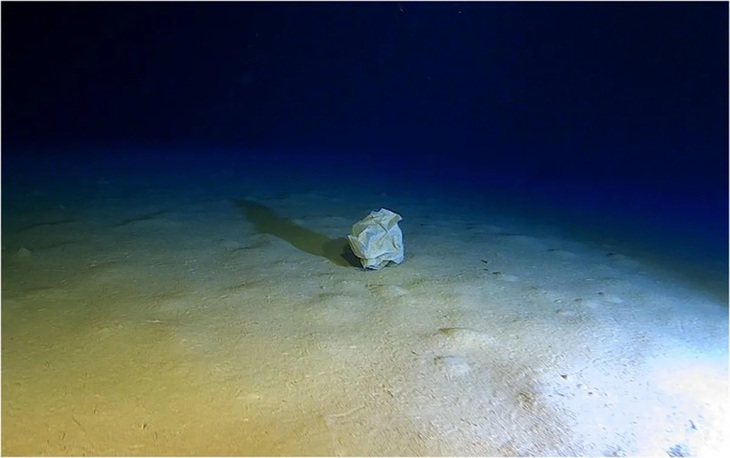
A piece of trash lies at the bottom of the Calypso Deep, the deepest place in the Mediterranean Sea - Photo: CALADAN OCEANIC
According to IFLScience on March 27, in a new study, scientists boarded a submarine-like device, called Limiting Factor, to survey the amount of ocean waste at the bottom of the Calypso Deep seabed in the Mediterranean.
They counted a total of 167 items, of which at least 148 were identified as trash and 19 were still unidentified. Plastics made up 88% of the trash, but glass, metal, and paper were also included. These included plastic bags, cups, glass bottles, strings, and plastic cups.
Based on the area surveyed, the team estimated that there should be 26,715 pieces of trash per square kilometer on the Calypso Deep seabed, making it one of the most trash-laden sites ever recorded in a deep-sea environment.
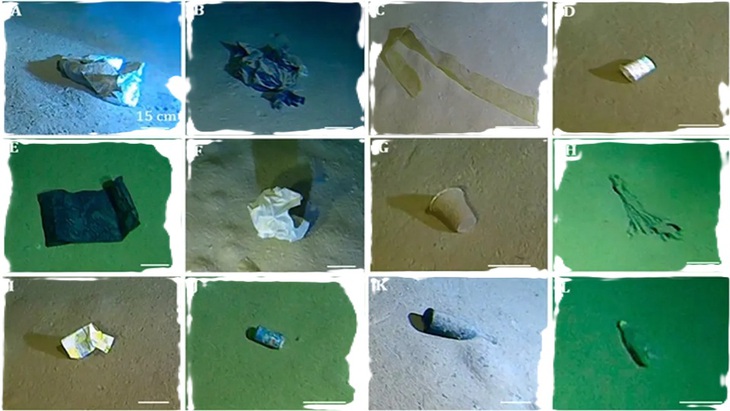
Some of the waste found in Calypso Deep - Photo: MARINE POLLUTION BULLETIN 2025
At approximately 5,122m deep, the Calypso Deep is the deepest point in the Mediterranean. The area is located on active fault lines, making it prone to earthquakes, and also creates a flat-bottomed deep sea surrounded by steep slopes that stretch thousands of metres.
In addition to human littering, the shape and location of Calypso Deep also help explain why this area is so littered.
"This is a closed depression, which allows waste to accumulate inside. Weak currents also contribute to the accumulation of waste on the seabed," said Professor Miquel Canals, an author of the study and working at the University of Barcelona (Spain).
The trash at Calypso Deep comes from a variety of sources, both onshore and offshore. It can be dumped directly into the ocean, washed ashore by waves, or carried by ocean currents. The team also found evidence of boats dumping trash directly into the ocean.
The team hopes their findings will serve as a wake-up call for policymakers, manufacturers and the public to take decisive action against the growing global plastic problem, especially in the heavily trafficked Mediterranean Sea.
The study was published in the journal Marine Pollution Bulletin .
Source: https://tuoitre.vn/giat-minh-phat-hien-rac-thai-o-noi-sau-nhat-dia-trung-hai-2025032813290372.htm




![[Photo] Panorama of the Opening Ceremony of the 43rd Nhan Dan Newspaper National Table Tennis Championship](https://vphoto.vietnam.vn/thumb/1200x675/vietnam/resource/IMAGE/2025/5/19/5e22950340b941309280448198bcf1d9)
![[Photo] General Secretary To Lam attends the conference to review 10 years of implementing Directive No. 05 of the Politburo and evaluate the results of implementing Regulation No. 09 of the Central Public Security Party Committee.](https://vphoto.vietnam.vn/thumb/1200x675/vietnam/resource/IMAGE/2025/5/19/2f44458c655a4403acd7929dbbfa5039)
![[Photo] Close-up of Tang Long Bridge, Thu Duc City after repairing rutting](https://vphoto.vietnam.vn/thumb/1200x675/vietnam/resource/IMAGE/2025/5/19/086736d9d11f43198f5bd8d78df9bd41)
![[Photo] President Luong Cuong presents the 40-year Party membership badge to Chief of the Office of the President Le Khanh Hai](https://vphoto.vietnam.vn/thumb/1200x675/vietnam/resource/IMAGE/2025/5/19/a22bc55dd7bf4a2ab7e3958d32282c15)



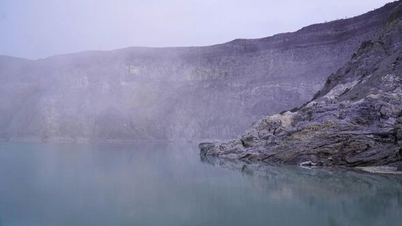









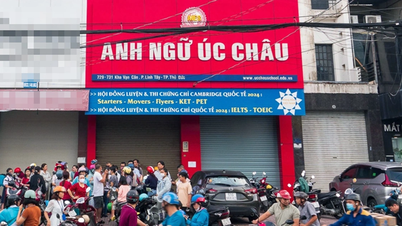



![[Photo] Prime Minister Pham Minh Chinh inspects the progress of the National Exhibition and Fair Center project](https://vphoto.vietnam.vn/thumb/1200x675/vietnam/resource/IMAGE/2025/5/19/35189ac8807140d897ad2b7d2583fbae)














































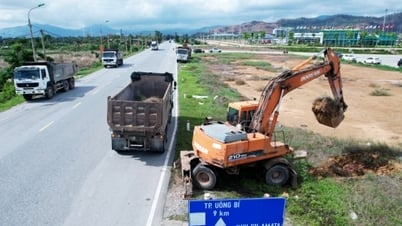














![[VIDEO] - Enhancing the value of Quang Nam OCOP products through trade connections](https://vphoto.vietnam.vn/thumb/402x226/vietnam/resource/IMAGE/2025/5/17/5be5b5fff1f14914986fad159097a677)



Comment (0)